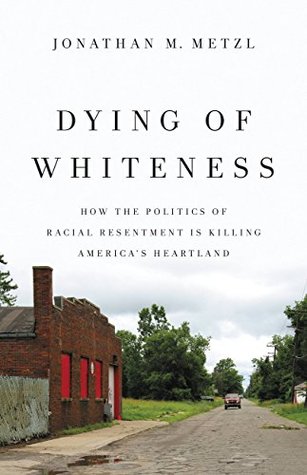More on this book
Community
Kindle Notes & Highlights
Read between
June 29 - July 14, 2025
In 1996, Congress passed a ban on federally funded gun research.
Dickey Amendment, and it stripped the Centers for Disease Control (CDC) of funding for gun violence prevention research and stipulated that “none of the funds made available for injury prevention and control at the Centers for Disease Control and Prevention may be used to advocate or promote gun control.” Prevention is a particularly important word in this sentence because it means that researchers must climb an immensely high wall if they wish to conduct federally funded research about guns—unlike pretty much every other kind of risk and pretty much every other kind of disease known to
...more
despite an overall focus on healing, biomedicine has been used to promote problematic ideologies and agendas. Indeed, part of why we need oversight bodies like the CDC in the first place is to continually assess research objectivity and promote gold-standard research methods.
Statistically speaking, then, white Americans die by gun suicide more than they should and die by gun homicide and police shootings less than other groups of people. For African Americans, it’s the exact opposite. But here as well, the patterns are more complicated than they might seem. This is because the trends of white suicide and black homicide followed opposite trajectories over past decades (and indeed over the same decades when many US states loosened their gun laws).
the Man Card campaign: its explicit claims not just about masculinity but about privilege. On the flip side of the novelty Man Card, fine print explained that the bearer held “Rights and Privileges.… Today he is a man. Fully entitled to all of the rights and privileges duly afforded.”
“The thought that I might kill myself formed in my mind coolly as a tree or a flower,” Sylvia Plath wrote in The Bell Jar.
Southerners who violently aimed to uphold white supremacy, in opposition to the so-called carpetbaggers and scallywags who promoted Reconstruction governments, black citizenship, and black political activity. Government also implies the bitter legacy of the civil rights era, when many—though certainly not all—white Southerners viewed federal efforts to desegregate schools, lunch counters, voting booths, and hospitals as threats to the so-called Southern way of life.1
Civil rights–era white protesters argued that “race mixing” was a symptom of “communism” in ways that played out in racist Southern discourse well into the twenty-first century.
“A lot of the people that I know that are in poverty are not healthy… the vast majority of them are very overweight, and the children are overweight.” “And how do you know they’re not healthy?” I asked. “Well,” the man continued, “just by their physical appearance, generally speaking, although you can look at their facial expressions, their faces and look at the coloring of their skin, that type of thing.”
black men frequently folded their skepticism about government into a broader recognition of social injustice.
“outcast[s] and stranger[s] in mine own house,” as W. E. B. Du Bois once described the doubly conscious experience of black America in which internalized identity coexisted with the thousand cuts of everyday restrictions and subliminal racisms.
Donald Trump and other leaders may have successfully appealed to long-held beliefs about white nationalism and supremacy. But the data suggests that the policies these politicians supported, and that their supporters voted for, effectively assured that white people, too, would pay more and suffer more and, ultimately, die more in the service of these larger ideals.
Nostalgia very often arises from false memory.
was with a bit of irony that, after the presidential election of 2016, conservative politicians touted the “Kansas model” of massive tax and spending cuts as a preview of Trump’s economic plans for the nation. It seemed more likely that Kansas warned the nation, ominously, of what was to come. Kansas, the land of Oz, had become a national parable warning of the downside of American austerity economics. Bloomberg News summarized: “The Kansas supply-side experiment unravels… tax cuts were supposed to spur growth, boost revenue and create jobs. The results were the exact opposite.” Forbes
...more
2017, sociologist Isaac Martin penned a column in the New York Times titled “How Republicans Learned to Sell Tax Cuts for the Rich,” in which he lay the answer in good marketing, a rejection of expertise, and the corrupted populism of Andrew Mellon. Mellon found a way to convince the American masses of the faulty proposition that “cutting income tax rates would actually increase tax revenues. In particular, he said, cutting the top income tax rates would encourage rich people to pull their money out of tax shelters and invest in creating jobs.”3
J. D. Vance, author of the widely acclaimed book Hillbilly Elegy, wrote a column after the 2016 presidential election titled “How Donald Trump Seduced America’s White Working Class,” detailing how GOP tax cuts often come packaged in messages of restored “greatness” and “learned helplessness” whose emotional content supersedes any fiscal details.


